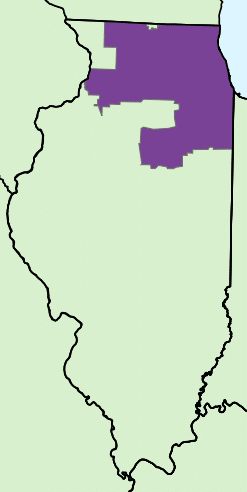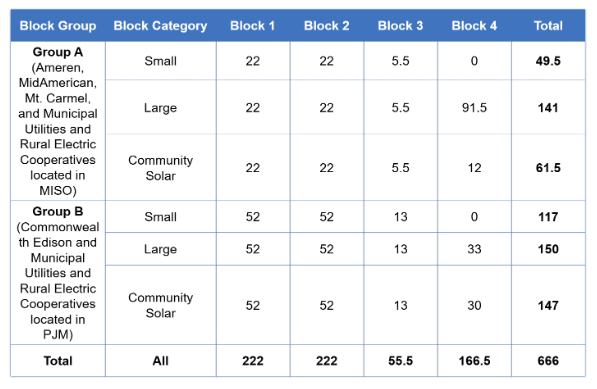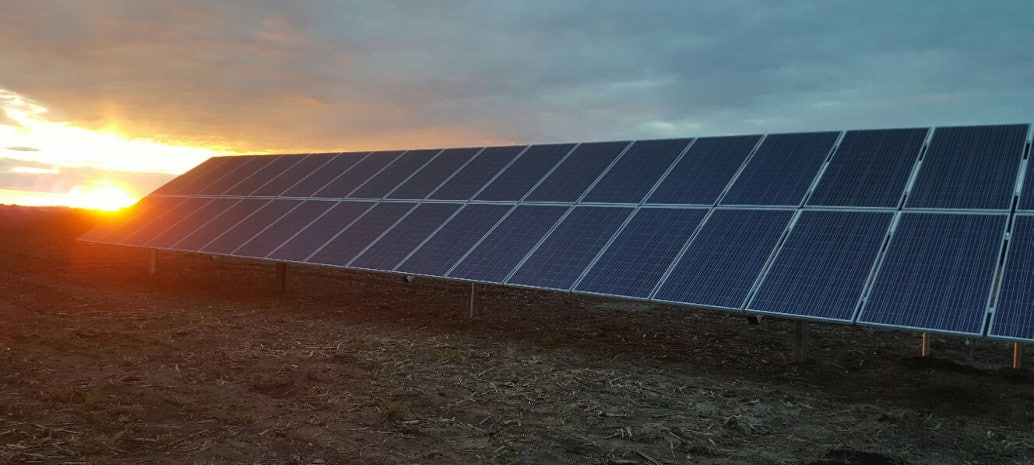Once a solar laggard, Illinois has become a booming state for solar development following the passage of the Future Energy Jobs Act (FEJA). And in terms of the attention by developers, this boom has been far more intense than program planners anticipated.
At the end of January, Illinois Power Agency (IPA) opened up its Adjustable Block Program for applications, which resulted in a flood of applications, particularly for community solar projects.
Last week the IPA followed this up with the allocation of the final 25% of capacity under its Adjustable Block Program, giving the large majority of capacity to large distributed generation (DG) projects, with only a token volume for the heavily oversubscribed community solar portion.

Participants in the process who pv magazine spoke with expressed surprise at how heavily the allocation was skewed towards the large rooftop solar category. In a five page document IPA does not appear to have provided much rationale as to the lack of correlation between applications and capacity awarded, only the following line:
The Agency believes this allocation will help support the significant interest in community solar project development, while also protecting the Renewable Resources Budget given the higher expected REC prices resulting from those projects.
Nor is it clear what the agency’s exact criteria was to begin with, as governing rules only call for a “diverse portfolio of projects”. And IPA appears to not even be trying to accommodate the interest in community solar. Per the the agency’s document:
With community solar applications of 940 MW for Group A and 864 MW for Group B, no allocation of discretionary capacity could possibly accommodate all—or even a substantial portion of—applicant projects.
Auction on Wednesday
 This allocation comes as developers nervously await the results of an auction to be held Wednesday to determine which projects will be awarded block grants. This will not apply to small DG projects, as those have not filled the capacity available in the initial block, however both community solar projects and large DG projects in the parts of the state that are part of the MISO grid (the green in the associated graphic) will be subject to lotteries.*
This allocation comes as developers nervously await the results of an auction to be held Wednesday to determine which projects will be awarded block grants. This will not apply to small DG projects, as those have not filled the capacity available in the initial block, however both community solar projects and large DG projects in the parts of the state that are part of the MISO grid (the green in the associated graphic) will be subject to lotteries.*
And while this lottery approaches, IPA is still reviewing applications. According to the agency’s latest dashboard, while all of the nearly 1.8 GW of community solar projects have been reviewed, the agency is still slogging through the large DG program, with 76 MW of the projects in the northern part of the state received before the deadline but not yet reviewed.

There are four blocks of the current program, and as incentives are fairly similar across the the four it is likely that community solar developers will be happy to get in on these first four rounds at all. All in all, Illinois will be awarding 666 MW of projects in these initial rounds of the Adjustable Block Program, as its downpayment on solar becoming a significant part of the state’s energy future.
*Correction: This article was corrected at 11:45 AM Eastern Time on April 8. A previous version of this article incorrectly stated that the block for large DG in the northern part of the state would go to an auction, when in fact it is large DG projects in Group A (projects in the rest of the state) that are going to an auction on Wednesday. We regret the error.
This content is protected by copyright and may not be reused. If you want to cooperate with us and would like to reuse some of our content, please contact: editors@pv-magazine.com.









By submitting this form you agree to pv magazine using your data for the purposes of publishing your comment.
Your personal data will only be disclosed or otherwise transmitted to third parties for the purposes of spam filtering or if this is necessary for technical maintenance of the website. Any other transfer to third parties will not take place unless this is justified on the basis of applicable data protection regulations or if pv magazine is legally obliged to do so.
You may revoke this consent at any time with effect for the future, in which case your personal data will be deleted immediately. Otherwise, your data will be deleted if pv magazine has processed your request or the purpose of data storage is fulfilled.
Further information on data privacy can be found in our Data Protection Policy.